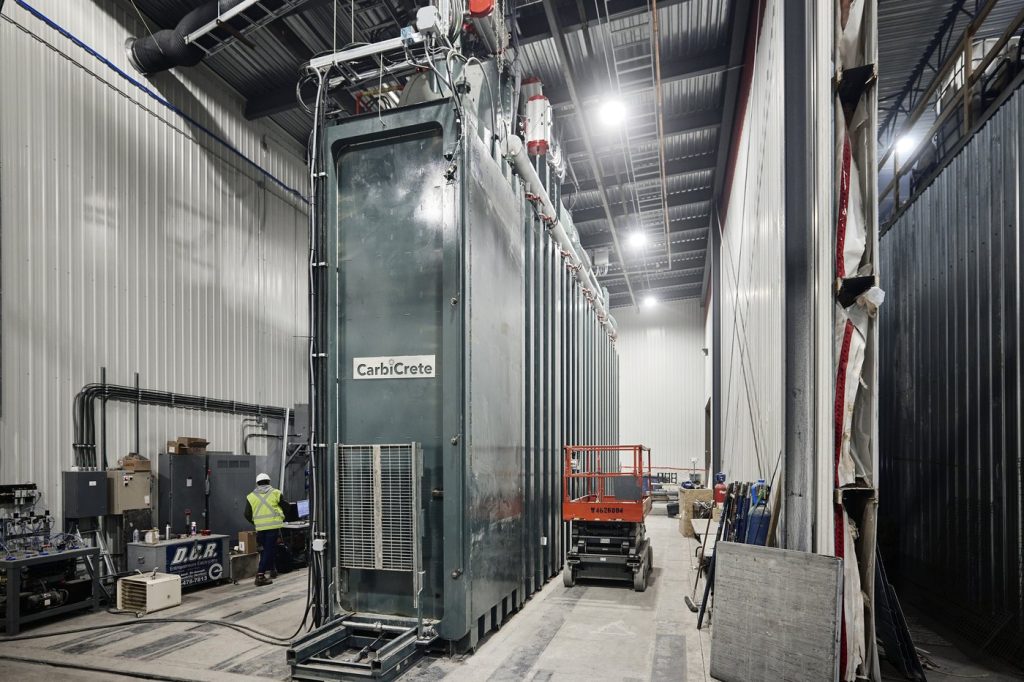Carbon dioxide (CO2), often viewed solely as a climate-warming gas, has potential applications that extend beyond emissions reduction. In Canada, carbon capture efforts have primarily focused on capturing CO2 from industrial sources and securely storing it underground. However, a growing interest in carbon utilization aims to transform this gas into valuable products, ranging from fuel and fertilizer to building materials and even soap.
Apoorv Sinha, CEO of Carbon Upcycling—a Calgary-based company—notes that carbon utilization is still in its early stages. The company combines industrial waste products with captured CO2 to create a cement-like substance usable in concrete applications such as sidewalks and foundations. Sinha asserts that Canada is making significant strides in terms of converting carbon into valuable materials across both the building and chemical sectors.
According to David Sanguinetti, interim CEO of Foresight Canada, carbon storage has been the conventional method in industry due to the existing expertise in large-scale implementation. While carbon utilization can potentially yield revenue through the development of usable products, its economic viability remains uncertain. Sanguinetti explains that the lack of a carbon pricing mechanism makes many technically feasible projects economically unfeasible since there's little incentive to pursue them.
A report commissioned by the Canadian Gas Association and conducted by Foresight Canada indicates that for the time being, carbon storage from large industrial emitters may prove more advantageous than carbon utilization. The report identifies southwestern Ontario as a promising location for the growth of carbon utilization, given its concentrations of large emitters and centers for innovation, although it lacks the underground storage infrastructure that provinces like Alberta possess.
CO2 utilization is categorized into two main types: direct use and conversion. Direct use has long included the practice of injecting CO2 into mature oilfields to enhance oil recovery. In contrast, conversion involves changing the chemical structure of CO2 to create products such as aviation fuel and fertilizers. An innovative Calgary-based company named CleanO2 has been successful in capturing CO2 from heating systems and transforming it into a pearl ash ingredient for personal care products like soap and shampoo.
One of the more promising avenues for CO2 utilization lies in the production of building materials, allowing the carbon to be trapped permanently. For instance, Carbon Upcycling recently celebrated a groundbreaking ceremony at the Ash Grove cement plant in Mississauga, Ontario, for a commercial demonstration project set to begin production in spring 2026.
Another company, CarbiCrete from Montreal, has developed a technology that enables the creation of greener precast masonry and hardscape materials, such as concrete blocks and paving stones, without traditional cement. CarbiCrete's process utilizes steelmaking slag instead of cement and cures it with CO2, achieving a concrete product that mimics the properties of cement-based concrete while eliminating associated emissions. Furthermore, this process permanently traps CO2 from the atmosphere.
CarbiCrete licenses its innovative technology to concrete manufacturers, assisting them in retrofitting their facilities for eco-friendly production practices. Dave Sawyer, principal economist at the Canadian Climate Institute, highlights that while carbon utilization can contribute to generating credits for sale, its role in the larger context of emissions reductions is relatively minor compared to other strategies.
Commercially, carbon capture, utilization, and storage have often been portrayed as a universal solution to climate challenges. However, Sawyer suggests that emerging technologies, such as sodium ion batteries, may offer equal technical feasibility at lower costs, drawing attention away from traditional carbon technologies that are often seen as cost-prohibitive.
Sinha emphasizes the need for an increased focus and support towards carbon utilization technologies, which currently receive only a fraction of the backing provided to traditional carbon storage initiatives. The lack of comprehensive data regarding how to design and operate these facilities is a hurdle that must be addressed to accelerate the deployment of successful carbon utilization strategies.










